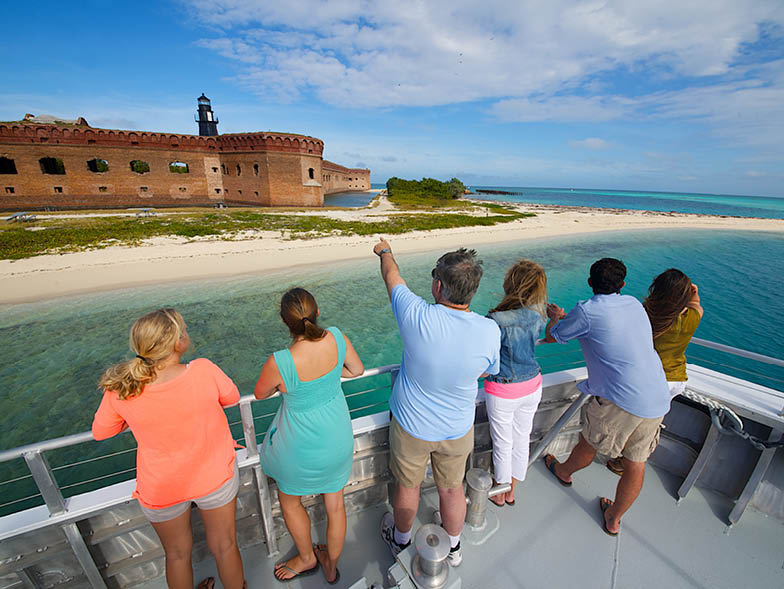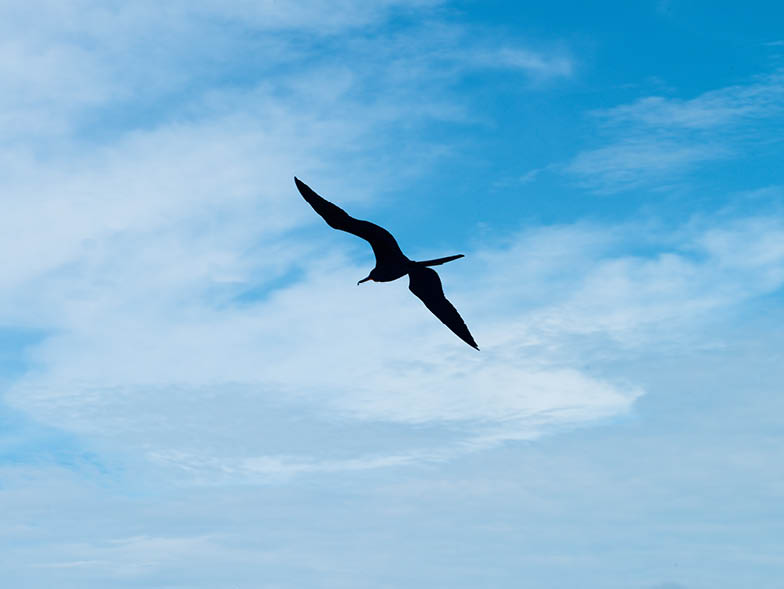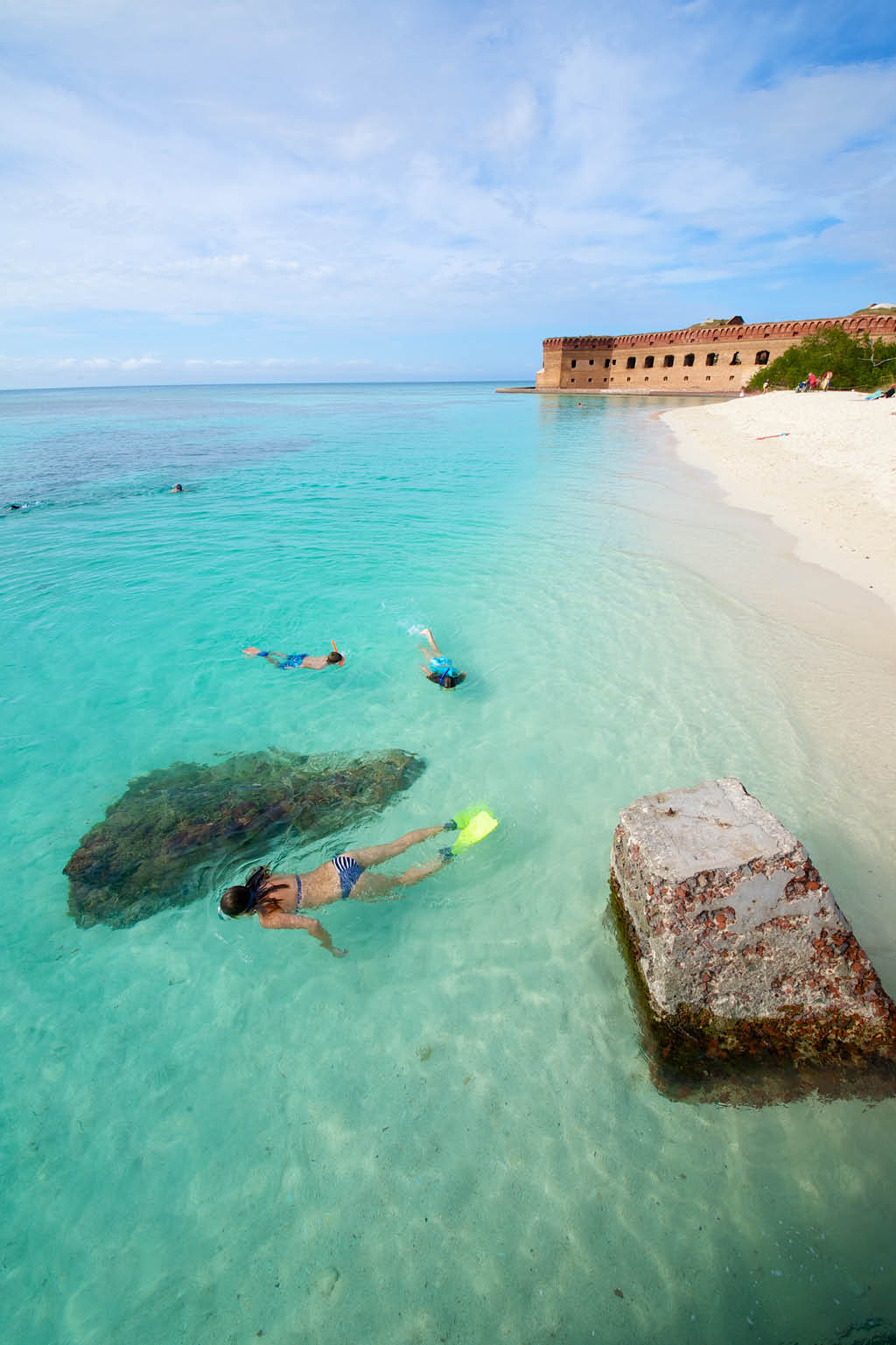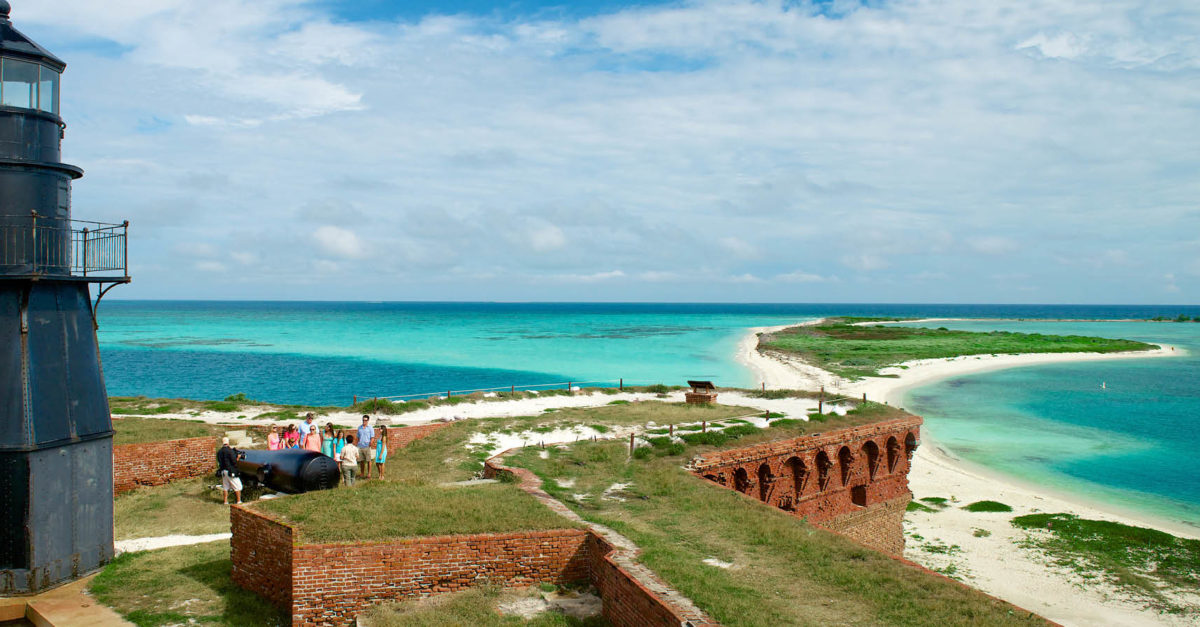The Gem of the Keys
American writer Ernest Hemingway sailed many different seas in his short sixty-one years of life. He served in the US Navy during World War I and, in his twenties and thirties, navigated to his temporary homes in Toronto and Paris. But there was perhaps no place he loved more than the Florida Keys, which he called home (and wrote admirably about) for much of
the 1930s.
It’s not hard to see why. The island chain forms a separation between the Gulf of Mexico and the Atlantic Ocean, starting about sixty-eight miles south of Miami and extending west. The water looks nearly identical to that found
in the Caribbean—richly turquoise and teeming with exotic species of fish and other marine life. Despite its proximity to Cuba and a history of Spanish ownership, the Keys have an interesting place in American history, too, beginning long before Hemingway was even born.

If you venture as far west into the Keys as possible, you’ll reach the Dry Tortugas—a cluster of small islands approximately seventy miles away from Key West and the westernmost islands of the Keys. The Dry Tortugas, perhaps more than any other islands in this chain, have a storied past that makes them a fascinating destination for historians and tourists alike.
The islands were originally named Las Tortugas, or “the turtles,” in 1513 by Spanish explorer Juan Ponce de León for their abundance of the gentle sea creatures. Shortly after, the term “dry” was added to warn other sailors of the islands’ lack of fresh water. In the centuries that followed, pirates predominantly used the Dry Tortugas as a hangout because of their deep-water coves surrounded by shallower points of entry—they were even mentioned in Robert Louis Stevenson’s 1883 novel, Treasure Island.
However, as Key West became a highly useful port and wealthy trading post, the US started cracking down on piracy. It began to develop the Dry Tortugas, building a lighthouse and a brick fortification system on Garden Key, Fort Jefferson, established after the War of 1812.
The Civil War and the invention of the rifled cannon (which could easily power through brick and stone) put a halt to construction of the fort, though the Union Army was able to make use of it as a prison. The islands saw minimal activity in the decades after the war and even throughout World Wars I and II, with the exception of 1935, when President Franklin D. Roosevelt declared Fort Jefferson a national monument, and, again in 1992, when the Dry Tortugas became an official national park.

Today, visitors flock to the Dry Tortugas National Park in astounding numbers, thanks in part to one very famous pirate. “What’s interesting is that we owe a lot of the recognition of the park in recent years to Captain Jack Sparrow from the Pirates of the Caribbean franchise,” laughs Terry Strickland, general manager of the Yankee Freedom III, the national park’s official ferry and tour. “The ironic part is that he’s not referring to the Dry Tortugas in the films; he’s talking about Tortuga—an island near Haiti.”
Despite the fan confusion, people like Strickland, who know and love the islands, are grateful for their skyrocketing popularity. Because of the Dry Tortugas’ remoteness, they are only accessible by ferry, by seaplane, or, very rarely, by private vessel. The number of passengers the ferry can transport is limited to 175 per trip, but it has still been able to host more than 50,000 people each year and close to half a million in the past decade.
If visitors come for their love of Captain Jack, they stay for the islands’ spectacular natural beauty and host of activities: snorkeling, bird-watching, and taking tours of Fort Jefferson being the most popular. At seventy miles away from the nearest inhabited island, the Dry Tortugas are one of the most ecologically protected areas in the world. There has been minimal human interference and development around their waters, helping to protect the naturally occurring coral reef system and marine life.

“The snorkeling is the best you’ll find in the continental US,” says Strickland. “The section of the southeastern barrier reef along the Dry Tortugas is farthest from the mainland and therefore has the least adverse impact from human activities. The water is more pristine, making the marine ecosystem healthier and, in turn, the coral.” A healthy ecosystem, Strickland says, brings in hundreds of species of tropical fish and the coral is easily accessible to snorkelers thanks to gently sloping beaches and shallow waters. The ferry provides everything you need for a day in the temperate surf—a snorkel, fins, and a mask—and offers a map to guide you through the most popular and easily navigable areas.
When you’re ready to head back to land, turn your eyes to the sky and you might see some of the Dry Tortugas’ hundreds of species of migratory birds. The islands are a key stopover for birds flying through the Great Florida Birding and Wildlife Trail—a migratory path that spans the entire state. Bush Key, next to Garden Key, is a breeding ground and nesting place for species like the frigate bird and sooty tern, which reach the peak of their migratory season in June and July. The islands have become one of the most popular spots to visit in the bird-watching community, especially in the spring and summer months.
Aside from exploring the islands’ many natural curiosities, there is enough to see on the tour of historic Fort Jefferson to last through the end of your stay. It provides a glimpse into some of the building’s most infamous residents, like Samuel Mudd, an accused coconspirator in the assassination of Abraham Lincoln, as well as the decades’ worth of construction complications the fort experienced.
A museum located within the fort, operated by the National Park Service, provides an interactive experience for visitors interested in learning more about the natural and cultural history of the islands, their rise and fall as a military installation, and the lives of prisoners and laborers who worked tirelessly on the fort’s construction.
Even though there’s a wealth of things to do on the Dry Tortugas, according to Strickland one of the most popular activities to do is to simply lie on a stretch of beach near the lapping waves, unplug, and relax. “There’s a beautiful beach, even with a boatload of people,” he says. “It’s still nice and quiet and removed from civilization, and something that a lot of visitors see as a big positive—though maybe not for everyone—is that the islands are out of cell phone range.”
About as peaceful, serene, and removed from the hustle and bustle of the mainland as you can get by boat, Dry Tortugas National Park is a true treasure. Rich in natural and man-made wonders, this jewel of the Florida Keys remains as enchanting for modern visitors as it was to explorers through the ages.
For more info, visit www.drytortugas.com






















